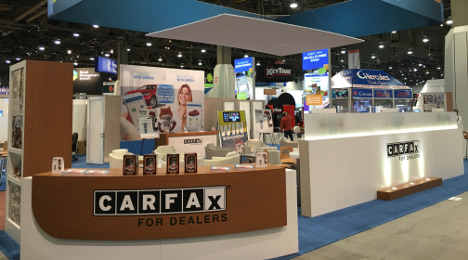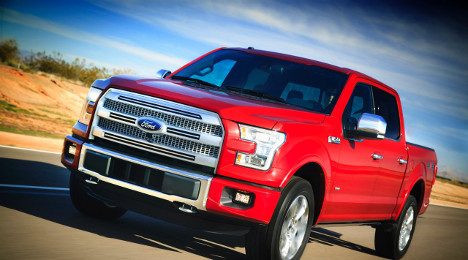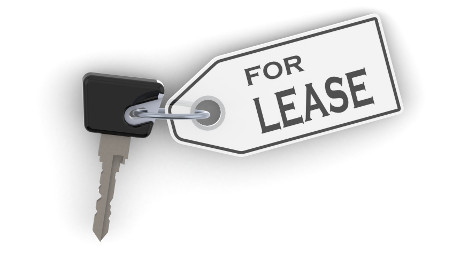While Black Book noticed that the 12-month annual depreciation shows the gap between cars and trucks is narrowing, the Manheim Used Vehicle Value Index made a slight upward turn in April after starting the year with three consecutive monthly declines.
Manheim determined that wholesale used vehicle prices (on a mix-, mileage-, and seasonally adjusted basis) inched up slightly in April, bringing the latest index reading to 122.8. Cox Automotive chief economist Tom Webb explained that given wholesale prices were easing at this time last year, the year-over-year decline in the index was reduced to 1.1 percent in April.
“Fundamentals suggest that the index’s rise in April will be temporary, but they do not suggest a near-term collapse in pricing,” Webb said. “A modest easing in wholesale pricing would not be unwelcomed by dealers, and it would not be overly painful for commercial consignors. A bigger, say 5 percent, decline would be harmful to both.”
Manheim reported that a straight average of auction sales in April showed prices rising approximately 3 percent from a year ago. But Webb pointed out that movement was the result of a higher commercial consignment share and newer units within that mix.
Webb also mentioned the average mileage on all auction sales in April was the lowest since January 2011.
“The influx of newer units into the wholesale market has had significant downward pressure on the pricing of slightly older, higher-mileage units,” he said.
Looking at the six vehicle segments Manheim tracks for the monthly index update, prices for pickups rose 6.4 percent, more than double the amount of the only other segment to post a price rise in April. That segment happened to be vans, which generated a 2.6-percent price rise.
Three of the four vehicle segments sustaining price declines in April fell in relatively close proximity as prices for luxury cars softened 2.4 percent, prices for CUVs and SUVs dipped by 2.0 percent and price for midsize cars ticked 0.8 percent lower. More pronounced was the price decline Manheim spotted for compact cars, which dropped by 8.8 percent year-over-year last month.
Also of note, Manheim mentioned the average auction price for rental risk units (adjusted for market class shifts and mileage) dropped by 7.5 percent in April as compared to a year ago. Furthermore, the average mileage at 41,137 miles was the lowest reading since September 2014.
Black Book’s depreciation rundown
According to Black Book data, the average price of a used vehicle for model years 2010-2014 depreciated by just 0.1 percent during April, signaling what is usually the last strong month of the spring season.
At the close of 2015, analysts found that 12-month truck depreciation was just 9.2 percent compared with 18.2 percent for cars. However, Black Book determined the past 12 months of results show depreciation rising to 14.3 percent for trucks and 20.6 percent for cars.
More noteworthy, Black Book insisted the 12-month annual depreciation shows the gap between cars and trucks is narrowing. Some truck segments such as full-size crossover/SUV, full-size Pickup and small pickup segments continue to show the lowest depreciation across the segments.
Analysts mentioned prestige luxury cars saw the largest segment depreciation during April at 2.2 percent. Vehicles in this segment include the Audi A8, BMW 7-Series, Lexus LS, Mercedes-Benz CLS Class, Mercedes-Benz S Class and Porsche Panamera. Vehicles in this segment finished the month with an average price of $43,616, an 18.9 percent change from year-ago levels ($35,389).
In a sign of the spring season, Black Book pointed out full-size cars saw the strongest retention during April at +1.3 percent. Vehicles in this segment include the Chevy Impala, Ford Taurus, Kia Cadenza, Nissan Maxima, Chrysler 300 and Toyota Avalon. Vehicles in this segment finished the month with an average price of $15,552, a 16.9-percent change from year-ago levels ($12,930).
Analysts went on to note eight vehicle segments, including full-size Cars, saw value increases during the month. Those vehicle segments were the small pickup trucks, midsize cars, full-size crossovers, midsized crossovers, sporty cars, sub-compact crossovers and the compact crossovers.
“Almost a third of all vehicle segments saw an increase in value this month, but we expect this volume of segment retention to subside moving through the remainder of the year,” said Anil Goyal, vice president of automotive valuation and analytics at Black Book. “As the supply levels for all used vehicles grow, we can expect to see a continued increase in overall depreciation moving forward.”
Analyzing April sales results
As he typically does, Webb also dissected the April sales results along with his analysis of the Manheim Used Vehicle Value Index.
On the used-vehicle side, Webb mentioned preliminary numbers and channel checks suggest sales rose again in April after the National Automobile Dealers Association reported total used retail unit volumes rose 6.5 percent in the first quarter of 2016.
Likewise, Webb noted sales of certified pre-owned vehicles jumped 8 percent in April, resulting in a year-to-date increase of 5.9 percent.
In the first quarter of 2016, Webb highlighted that the seven publicly traded dealership groups posted their 27th consecutive quarterly increase in same-store used retail unit volumes.
“The increase was modest (less than 1 percent), but naturally the comps are becoming increasingly hard,” Webb said. “Unfortunately, the year-over-year change in gross margins on those sales has declined for the same extended period.
“Higher throughput and increased operating efficiencies have enabled dealers to make record profits despite the narrow margins, and thus, we expect they will continue to be active bidders on the growing volumes of vehicles being offered for sale at auction,” he continued.
In the new-vehicle market, Webb began his assessment by recollecting about what he noted in March.
“We asked the question: Will the industry accept or defy the plateau? April was an encouraging sign of acceptance,” Webb said.
He highlighted the seasonally adjusted annual selling rate (SAAR) jumped back up to 17.3 million, up from 16.5 million in March.
“That had a lot to do with five weekends and less to do with incentives," Webb said. “Dealer inventories are a bit high, but transaction prices have continued to rise.
“On net, we feel the new-vehicle market remains benign with respect to its impact on wholesale used vehicle pricing,” he continued. “Given that the SAAR has averaged just under 17.2 million in the first four months of 2016, we would consider any pushing of the sales pace significantly above last year’s record 17.5 million as defiance against the market-based plateau — and one that would hurt used-vehicle residuals.”
When it comes to finding deals on pre-owned vehicles, it turns out that holidays may be both the best of times and the worst of times.
According to a recent study by iSeeCars.com that analyzed more than 40 million used-car sales between 2013 and 2015, Black Friday is the best time to find a deal, with 33.1 percent more than average available. Conversely, the 4th of July is the worst time, with 28 percent fewer deals than average.
A deal in this case is defined as savings of at least 5 percent below market value.
“It's always nice to save money, and when you are buying something as expensive as a car, saving even 5 percent of your purchase, or $952 off the average price of $19,040, can really add up,” said Phong Ly, chief executive officer of iSeeCars.com.
Other holidays found to be prime times for finding deals were Veterans Day (32.5 percent more than average), Thanksgiving (30.6 percent), Columbus Day (30.5 percent), Martin Luther King Jr. Day (29.4 percent), Christmas Eve (28.7 percent), Christmas (21.4 percent) and New Year’s Eve (21.3 percent).
Holidays found to be not so auspicious were Mother’s Day (27.5 percent fewer deals than average), Easter (22.2 percent) and Good Friday (21.6 percent), with Memorial Day and Father’s Day tied at 18.3 percent.
Dealers tend to make a big push to boost sales in the late fall and early winter, Ly said, while the spring and summer months tend to be when dealers see higher demand, and therefore less of a need to lower their pricing. The five-month stretch from April through August was the worst for finding deals, with 27 percent to 10.2 percent fewer deals than average.
Other key findings from the study:
- The best month to find a deal is November (26.9 percent more than average), while the worst month is April (27 percent fewer).
- The first day of the month (8.5 percent more than average) has more deals than the last day (slightly lower than 5.6 percent more).
- Shopping Monday through Thursday (1.2 percent more deals than average) is slightly better than shopping on weekends (1.6 percent fewer deals).
Taking all these considerations into account, Ly noted, consumers who are planning on buying a used car later this year could be exceptionally well poised for saving money.
“With over 3 million cars expected to come off-lease this year, the used car inventory will grow, making it ripe for dealers anxious to move the cars off their lots," he said.
Summer might not officially arrive for another six weeks, but Black Book identified a potential new trend that signals that the end of the spring market may be around the corner.
According to this week’s Black Book Market Insights report released on Wednesday, analysts noticed that many car segments saw weakening retention, which is a reversal of the previous several weeks.
Volume-weighted, Black Book indicated that overall car values decreased by 0.21 percent last week. This is slightly higher than the average depreciation rate of 0.13 percent seen in the previous four weeks.
Analysts mentioned compact car, sub-compact car, prestige luxury car and luxury car segments performed the worst, changing by -0.35 percent, -0.31 percent, -0.28 percent and -0.24 percent, respectively.
“Compact Cars experienced the largest decline, while compact crossover/SUVs showed the biggest lift in values as supplies on small cars remains high, while demand for small crossovers continues to be strong,” said Anil Goyal, Black Book’s senior vice president of automotive valuation and analytics.
On the truck side, Black Book determined that truck values increased by 0.05 percent last week when looking at the volume-weighted data. Analysts pointed out the latest reading is much better than the average change of -0.12 percent seen in the previous four weeks.
As Goyal referenced, compact crossover/SUV and minivan segments performed the best, ticking up by 0.36 percent and 0.25 percent, respectively.
When Black Book personnel mingled with dealers in the lanes last week, representatives gathered a variety of perspectives, including varying ones from the same state.
One Pennsylvania dealer said, “Consignment and attendance were both down this week but still a decent sale thanks to the Internet buyers.” Meanwhile, another operator in the Keystone State noted, “Heavy demand for used vehicles in this area with a small sale today and good units selling quickly.”
Down South, a dealer in Florida said, “Good sale today with really good attendance. Buyers looking for good history and sharp units.”
And up North, a dealer in Michigan shared a comment that coincided with Black Blook’s latest data when the operator mentioned, “Bidding remains active on both cars and trucks at this location. Trucks remain strong with very little dip in prices.”
Finally out West, a dealer in California shared, “SUVs, 4×4 trucks and high-end vehicles were in demand at today’s auction.”
Black Book’s specialty markets report
Along with sharing the latest Black Book Market Insights report, analysts also touched on the specialty markets this week. Here is the rundown:
• Collectible cars: Black Book said it has been seeing a pretty large uptick in late-model luxury vehicles showing up at collectible car auctions recently. Although analysts indicated this isn’t really a new concept (many of the less desirable auction time slots have been filled in with these kinds of cars for years), what is different now is the amount that they’re seeing and the prominence that these vehicles, such as the R-230 (2001-2012) Mercedes Benz SL models, are receiving.
• Recreational vehicles: As we enter the last part of spring and the first part of summer, Black Book determined that values of RVs sold at wholesale auction have started to level off. The firm said this development is not surprising for this time of year, as most dealers have been buying inventory for the past several months in order to be fully stocked when the first wave of shoppers were lured into their stores by the nicer weather.
• Powersports: After last month’s solid, though modest, gains for most of the segments, things are more of a “mixed bag” this month, according to Black Book. Prices are generally up for the more recent models, while many of the older units have declined a bit, bringing down the averages.
• Heavy-duty trucks: Analysts noticed that depreciation for the past three months has been very consistent, but there were signs at the very end of April that auction values for the over the road and regional heavy duty trucks may be starting to drop more heavily. They added that the constructional/vocational segment have showed no signs of this increasing depreciation.
• Medium duty trucks: Black Book continues to see a stable rate of decline in the medium duty truck wholesale market. The 2005-2012 model years came down, on average, $109 or 0.6 percent. In March, that average decline for this group was $114 or 0.6 percent. The 2013 and 2014 model years had similar declines. The average amount of decline was $346 or 0.8 percent for April, and in March, that average decline was $335 or 0.8 percent.
About two years ago, Carfax launched Used Car Listings, the vehicle history report provider’s foray into showcasing dealership inventory directly to consumers. The company explained how the successes of that endeavor propelled Carfax into position to launch a vehicle value tool this spring.
During a conversation with Auto Remarketing at the NADA Convention & Expo, Carfax communications director Larry Gamache emphasized that no matter the product, what the company is most proud of is helping “our dealer customers build confidence with consumers.”
What helped to cultivate that path for store managers and their customers is leveraging vehicle history data in as many ways as possible, according to Gamache, who recapped the journey Carfax has navigated since the Used Car Listings went live.
“From the beginning, we got incredibly positive feedback that the listings product is incredibly transparent,” Gamache said. “There’s no ads or gimmicks. We want to facilitate the relationship between the consumer and the dealer. We’re not interested in selling ads to your competition or having a different manufacturer conquest your vehicle or your dealership. That fair marketplace has been incredibly appealing to our dealer customers.
“We launched it two years ago and we have learned more in the past two years than we did in the past 30 years of vehicle history business,” he continued. “The listing space has been incredible for us. It’s helped our company grow, and I think it’s going to be a really big benefit for dealers to have another marketplace in which they can compete and compete fairly.”
“One of the things we learned is just how much consumers were looking for an alternative and that there was room to innovate in the listing space. So many used-car listing sites were sort of grounded in that classified sort of experience from where they grew. Carfax came at it with a completely fresh perspective. It allowed us to do things unconventionally,” Gamache went on to say.
“But one of the biggest things we’ve learned is just how much consumers thought about us when it came to vehicle history reports and gaining the understanding that vehicle history at large could be used in all of these new and innovative ways. That’s been the really big lesson that we’ve had to wrap our head around,” he added.
Carfax wrapped its collective head around another project for what Gamache acknowledged has been the past “few” years. The goal has been to create another vehicle pricing model that can take advantage of what made the company’s vehicle inventory listings so popular. As a result, Carfax found a way to incorporate vehicle listings into the usual criteria contained within our resources often used by dealers or consumers.
But Gamache explained what distinguishes the Carfax product, which came out while the industry gathered in Las Vegas for NADA’s annual event.
“It really boils down to one principle idea,” he said. “If you put two vehicles side by side that are very similar with similar mileage, make model and trim, if I told you one of them had been in an accident and one had not, you wouldn’t pay the same price for both of those vehicles. The overwhelming majority of people would say that the vehicle that had been involved in an accident would be worth less.
“The fact is, we’re the first and only pricing model that actually takes vehicle history into account and give you a vehicle specific price on every vehicle in the United States,” he continued.
“It’s really designed to give consumers and dealers a more accurate price on every vehicle,” Gamache went on to say. “It takes into account things like whether a vehicle had been involved in an accident. It takes into account where the vehicle has been previously titled. It matters; vehicles that were driven in Massachusetts for their entire history are going to have a different value than those that were driven in Nevada or Arizona.
“It also matters if a vehicle was involved in an accident last month versus 10 years ago. All of that data is built into the new Carfax Value and consumers and dealers have access for the first time to a price that actually takes into account a vehicle’s history.”
The Carfax value tool can generate data based on what can be incorporated into a trade-in negotiation or a retail transaction as well as what dealers can expect when in the lanes at the auction; or as Gamache noted, “where the price is relevant.”
Gamache prefers not to think Carfax is explicitly trying to compete against other vehicle value providers.
“Our mission has been to provide crucial information to help dealers and consumers make decisions about cars with more confidence,” he said. “There is evidence when you talk to people that they want to shop for cars and they want to know if the car has had one owner or multiple owners. They want to know if it’s been involved in an accident. That led us to make this vehicle history information available through Carfax Used Vehicle Listings. I think the same thing happens as you move into through the used-car space. People want to have a price that’s takes into account vehicle history.
“We have known forever that vehicles involved in accidents or one-owner vehicles,” he added. “Now there is pricing tool that helps you unlock that value from a third party. It’s really more about our ongoing mission to make buyers and sellers more confident.”
While Carfax is incorporating this pricing tool into its portfolio of offerings, Gamache reiterated that the company remains committed to keeping its core intact, which includes providing vehicle history report information to its network of industry partners as well as automakers.
“The most exciting thing for us is this commitment to transparency and sharing information to making sure those buyers and sellers have access to information so they can make informed decisions is now really a trend in the automotive space. We couldn’t be happier,” he said.
Senior Editor Joe Overby contributed to this report.
With the weather starting to warm up in most places throughout the country, Kelley Blue Book’s latest used-vehicle value analysis showed how units often connected with summertime activities are outperforming all others.
Along with sharing the top 10 specific models posting the greatest year-over-year changes in value, the Blue Book Market Report for the first quarter of 2016 indicated the high performance and sport car segments are faring better on the wholesale market because of low fuel prices that have spurred strong demand.
KBB reported values for high performance vehicles are up 2.9 percent while values for sports cars are 2.5 percent higher when looking at Q1 data for units from the 2013 through 2015 model years. The readings for those two vehicle segments each were more than double the value rises for the other segments within the top five, including midsize cars (up 1.1 percent), compact cars (up 0.9 percent) and luxury high performance cars (up 0.6 percent).
“Interestingly, the high performance and sports car segments outperformed all other segments,” Kelley Blue Book analyst Sean Foyil said. “As a result of low fuel prices, consumers are less concerned with fuel efficiency as a factor when choosing their next vehicles and more concerned with other aspects, such as performance, which explains the continued decline for electric and hybrid vehicles compared to the rest of the market.”
KBB mentioned in the report that fuel prices remained at a lower starting point in the first quarter than in the last two years at $2.03 per gallon, falling 31 cents in mid-February and rebounding to $2.08 per gallon in April.
In the first quarter of 2016, analysts determined the average price for a gallon of fuel rose 5 cents or 2.4 percent.
“The average price per gallon of fuel is down 14 percent year-over-year,” Foyil said. “However, we are seeing seasonal trends consistent with previous years and expect fuel prices to rise at a slow and steady pace into the summer months.”
The report highlighted that overall auction values for used 1- to 3-year-old vehicles declined 1.3 percent, or roughly $235, in the first quarter of 2016.
“One of the most notable differences seen this year is the lack of an upward swing in values during the first few months of the year,” analysts said. “Typically, the used-car market sees an uptick in values in the 2 to 4 percent range.”
However this year, Kelley Blue Book reported a slight 1 percent decrease. Leading the downward charge were:
—Electric vehicles: down 7.5 percent
—Hybrid/alternative energy vehicles: down 4.9 percent
—Entry level luxury cars: down 4.4 percent
—Vans: down 4.1 percent
—Luxury midsize SUV/crossover: down 3.9 percent
“An abundance of volume in auction lanes across the country continues to be a key force putting downward pressure on auction prices,” KBB analysts said.
The report also mentioned the top 10 vehicles that posted the greatest swings in value during Q1.
Top 10 Performing Models
—Mitsubishi Mirage: up 5.4 percent
—Dodge Challenger: up 4.4 percent
—Ford Mustang: up 4.3 percent
—Chrysler 300: up 4.3 percent
—Honda Civic: up 4.1 percent
—Chevrolet Camaro: up 4.1 percent
—Nissan Altima: up 4.0 percent
—Volvo C30: up 3.9 percent
—Chrysler Town & Country: up 3.9 percent
—Ford Expedition: up 3.6 percent
Bottom 10 Performing Models
—Nissan LEAF: down 19.3 percent
—Volkswagen Touareg: down 12.6 percent
—BMW i3: down 12.5 percent
—Ram C/V: down 12.1 percent
—Mercedes-Benz B-Class: down 11.9 percent
—Suzuki Kizashi: down 11.5 percent
—Chevrolet Volt: down 11.2 percent
—Porsche 911: down 11.0 percent
—Suzuki Grand Vitara: down 10.4 percent
—Ram C/V Tradesman: down 10.2 percent
Despite some slight surges in pricing last week, Black Book shared new data this week that shows additional truck segments may be feeling more pricing pressure, resulting in many trucks holding their values less than they have in previous years.
Year to date, Black Book indicated all truck segments have performed worse in comparison to the same time last year when looking at value retention. The best performing segment with lowest depreciation this year to date is the full-size crossover/SUV, which has dropped by 0.20 percent YTD compared to a dip of 0.12 percent during same time last year.
Here are some of the worst-performing truck segments in 2016 versus same time 2015:
• Full-size vans (-0.39 percent in 2016 versus +0.05 percent in 2015)
• Compact crossover/SUV (-0.26 percent versus +0.03 percent in 2015)
• Full-size pickup (-0.35 percent in 2016 versus +0.02 percent in 2015)
• Small pickups (-0.28 percent in 2016 versus -0.04 percent in 2015)
“Clearly, the sales success and consumer demand that trucks have enjoyed over the last few years will eventually catch up and we’re beginning to feel some of this tide turning in 2016,” said Anil Goyal, Senior vice president of automotive valuation and analytics for Black Book.
“We’re beginning to see more of this volume return to the wholesale market, which is placing pressure on truck retention strength,” Goyal continued.
However, this week’s edition of Black Book Market Insights mentioned some information counter to what the year-to-date trends revealed.
Analysts noticed five truck segments including subcompact crossover, compact crossover/SUV, midsize crossover/SUV, sub-compact luxury crossover and small pickup increased in value by 0.18 percent, 0.07 percent, 0.16 percent, 0.08 percent and 0.11 percent, respectively.
Black Book also noted when looking at the volume-weighted data, overall truck values changed little last week. The average depreciation rate in truck segments came in at 0.27 percent in the previous eight weeks.
Meanwhile for cars, Black Book indicated that the volume-weighted analysis showed overall car values decreased by only 0.10 percent last week. This rate as much better than the average depreciation rate of 0.23 percent seen in the previous eight weeks.
Analysts noticed full-size cars and mid-size cars were the only two car segments with an increase in value of 0.18 percent and 0.16 percent, respectively. The prestige luxury car segment declined the most at 0.79 percent.
“The used-car market showed broad strength in the market last week,” Goyal said.
The latest Black Book Market Insights also contained some dealer perspectives gathered by the company’s on-site personnel.
Black Book recapped that a sale had a Pennsylvania dealer saying, “Buyers in this location seem to have plenty of money and are spending. Everything is selling well today.”
Another dealer from Pennsylvania echoed that sentiment to Black Book, saying “Most dealers indicated that the need for vehicles was great and even though prices were high, they were still buying.”
Meanwhile a dealer from Minnesota told Black Book, “This week there seemed to be an above normal rate of availability with very good dealer attendance.”
A Tennessee operator who had been scouring the lanes noted, “Not a great selection here today with prices a little lower than yesterday’s auction.”
Out West, a Nevada dealer added, “At today’s auction, performance, sporty cars, midsize and full-size trucks were in demand.”
Finally, the weather impacted action in the lanes when a dealer from Michigan spoke with Black Book, saying, “Lots of wind and rain today so not a very good sale.”
Of the nine car segments that Black Book tracks, luxury cars showed the greatest price decline last week.
Their dip in prices (0.55 percent) was more than twice the overall percentage decline for the nine car segments (0.22 percent).
In a recap of the Black Book Market Insights reports, Black Book poses this question, which might as well have been rhetorical.
“Could this be a result of all the off-lease volume returning to the market?” the company asks, referring to luxury cars leading the decline.
Black Book’s data incudes volume-weighted wholesale price averages for vehicles from model-years 2007 through 2013.
Meanwhile, in its data set — which measured the price trends among vehicles up to 8 years old — NADA Used Car Guide found that on a month-over-month basis, there were several luxury segments leading the downward used price movement.
Luxury large utilities (down 0.7 percent) had the greatest sequential decline in March, with luxury large cars second (down 0.4 percent) and luxury midsize utilities in third (down 0.1 percent), according to NADA Used Car Guide’s April Guidelines report.
While still increasing, luxury compact utility (up 0.2 percent), luxury midsize cars (up 0.3 percent) and luxury compact cars (up 1.0 percent) were still below the average industry change (an increase of 1.1 percent).
But perhaps a better tell for the impact on off-lease volumes is found in quarterly data.
NADA Used Car Guide looked at the quarter-to-quarter price changes that occurred from Q4 of 2014 to Q1 of 2015.
It then measured how much difference (in percentage points) there was between those percentages and the quarter-to-quarter price changes that occurred from Q4 2015 to Q4 2016.
The biggest percentage-point gaps occurred in compact utility vehicles, compact cars and midsize utility vehicles.
“For example, compact utility prices rose by 2.3 percent from Q4 2014 through Q1 2015, while they declined by 1.9 percent over the period this year — a loss of 4.2 percentage points,” NADA Used Car Guide's Jonathan Banks wrote in the report.
“The Q1 fall in compact car and midsize utility prices stands at a similar average of 4 points. Given Used Car Guide’s outlook for sizeable increases in off-lease volume, prices for these segments should continue to erode at an above average rate as the year progresses,” he added.
The first quarter marked the first year-over-year decline in NADA Used Car Guide’s measure of used-vehicle prices in about seven years.
And if this keeps up, used values will fall on an annual basis for the first time since 2008.
NADA Used Car Guide said in a news release accompanying its monthly Guidelines report that its seasonally adjusted used-vehicle index for March was down about 1 percent from February.
The reading of 118.6 represents a five-year low.
Used prices were actually up 1 percent in March, but over the prior seven years, they had increased an average of 2.7 percent in March, NADA Used Car Guide explained.
Hence, the index going lower.
“We saw the index down as we closed out the first quarter of the year as well,” NADA Used Car Guide executive analyst Jonathan Banks said in the news release.
“Compared to Q1 of 2015, it was down 3.6 percent,” he said. “It was the first year-over-year decline we've seen since 2009.”
In the Guidelines report, analysts forecast a 1.3-percent to 1.8-pecent sequential decline in April for prices of used cars up to 8 years old. The past two years, they note, the decline has averaged 1.1 percent.
May is likely to show a 3-percent decline, with June and July showing some stabilization.
But here’s the kicker: full-year used-car prices are likely to drop between 5 percent and 6 percent year-over-year on an index basis, NADA Used Car Guide said.
The last “material decline” in used prices?
2008.
Perhaps the sprouts of a springtime wholesale price rise now really are starting to germinate.
According to ADESA Analytical Services’ monthly analysis of wholesale vehicle prices by vehicle model class, used-car prices in March averaged $10,815. The figure represented a 6.0-perent increase compared to February and a 1.7-percent uptick relative to March of last year.
Continuing a now-familiar pattern, ADESA chief economist Tom Kontos pointed out car prices on a year-over-year basis were down, while truck prices were up, particularly for full-size SUVs, CUVs, and pickups.
“Signs of the traditional spring tax-season market appeared in March as average wholesale prices rose both on a sequential and annual basis,” Kontos said in his monthly Kontos Kommentary that accompanied the latest data.
“Yet price softening driven by supply growth remains a visible undercurrent as totals and averages are broken down into model class, sale type and age buckets,” he added.
Looking deeper into the March data, ADESA reported that average wholesale prices for used vehicles remarketed by manufacturers were up 1.9 percent month-over-month but down 1.0 percent year-over-year.
Analysts noticed prices for fleet/lease consignors rose 6.8 percent sequentially but dropped 2.4 percent annually.
Within that category, Kontos mentioned off-rental risk units had “significant” year-over-year price declines despite lower average mileage.
“Ditto for prices of 3-model-year-old vehicles, a proxy for off-lease vehicles,” he went on to say.
ADESA also pointed out that 2- and 4-year-old vehicles also saw “major” year-over-year price declines, as did older models.
Finally, the auction company indicated dealer consignors saw a 4.1-percent price increase versus February and a 1.5-percent increase relative to March of last year.
Kontos offered more assessment about the March wholesale price data in the video available at the top of this page.
ADESA Wholesale Used-Vehicle Price Trends
| |
Average |
Price |
($/Unit) |
Latest |
Month Versus |
| |
March 2016 |
February 2016 |
March 2015 |
Prior Month |
Prior Year |
| |
|
|
|
|
|
| Total All Vehicles |
$10,815 |
$10,202 |
$10,639 |
6.0% |
1.7% |
| |
|
|
|
|
|
| Total Cars |
$9,095 |
$8,508 |
$9,395 |
6.9% |
-3.2% |
| Compact Car |
$7,060 |
$6,650 |
$7,356 |
6.2% |
-4.0% |
| Midsize Car |
$8,119 |
$7,667 |
$8,122 |
5.9% |
0.0% |
| Full-size Car |
$7,828 |
$7,378 |
$8,194 |
6.1% |
-4.5% |
| Luxury Car |
$13,668 |
$12,902 |
$14,201 |
5.9% |
-3.8% |
| Sporty Car |
$14,550 |
$12,901 |
$13,970 |
12.8% |
4.1% |
| |
|
|
|
|
|
| Total Trucks |
$12,685 |
$12,032 |
$12,039 |
5.4% |
5.4% |
| Minivan |
$7,964 |
$7,262 |
$8,410 |
9.7% |
-5.3% |
| Full-size Van |
$12,788 |
$12,429 |
$12,805 |
2.9% |
-0.1% |
| Compact SUV/CUV |
$11,093 |
$10,615 |
$11,060 |
4.5% |
0.3% |
| Midsize SUV/CUV |
$11,327 |
$10,665 |
$10,721 |
6.2% |
5.6% |
| Full-size SUV/CUV |
$13,428 |
$12,100 |
$11,930 |
11.0% |
12.6% |
| Luxury SUV/CUV |
$18,891 |
$17,761 |
$18,865 |
6.4% |
0.1% |
| Compact Pickup |
$8,627 |
$8,370 |
$7,882 |
3.1% |
9.5% |
| Full-size Pickup |
$15,821 |
$15,303 |
$14,318 |
3.4% |
10.5% |
Source: ADESA Analytical Services. February revised.
It has been unseasonably chilly and cloudy near the North Carolina offices of Auto Remarketing in recent days — to the point where it doesn't quite feel like spring.
Folks selling used cars in the wholesale market probably can relate.
Black Book released a pair of analyses on Tuesday, one detailing wholesale price movement over the past month, the other dissecting the past week.
A common theme in both: the spring season just isn’t the same this year.
In the weekly Used Car Market Insights report, Black Book called this the “most glaring trend,” pointing out that prices on both cars and trucks were down last week.
A year ago, they were both up.
Specifically, cars were off 0.16 percent (volume-weighted), against a 0.17-percent gain in the same week of 2015. Trucks were off 0.14 percent after having climbed 0.06 percent a year ago.
“Small cars, crossovers and pickup trucks showed good performance; however, the spring season this year continues to be weaker than what we’ve seen in the past couple of years,” said Anil Goyal, senior vice president of automotive valuation and analytics, said in the weekly report.
The weekly report covers model years 2007 through 2013 and measures volume-weighted wholesale average values. The monthly report is specific to vehicles from model years 2010-2014.
For the month of March, cars showed a 0.4-percent price decline, with trucks down 1.3 percent, Black Book said in the monthly report.
Of the 22 segments included in Black Book’s data set, just three (compact cars and sporty cars at 0.6 percent and full-size cars at 0.7 percent) showed increases in price during March, with the subcompact compact crossover showing flat prices.
In that same analysis, the firm points out that overall depreciation was considerably stronger in the first quarter this year (3.6 percent) than it was in Q1 of 2015 (0.6 percent).
“While this is the time of year when values see noticeable strength, it’s very apparent that this year’s spring market isn’t as strong as it has been the last few years,” Goyal said in the monthly analysis. “More than ever, it’s important for dealers and remarketers to pay close attention to the data to spot the trends that can shape their inventory strategies for the remainder of the year.”












